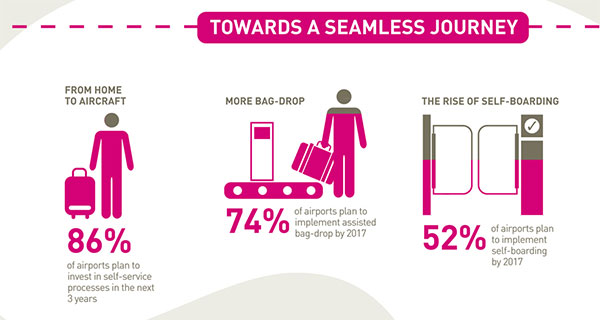Airports of the Future: Why Airport Security Privatization is the Next...
The U.S. aviation industry is facing a pivotal moment, grappling with increased passenger traffic, outdated infrastructure, and government indecision. In response, the Transportation Security Administration (TSA) is embracing private-sector involvement as a solution to these challenges. The Screening Partnership Program (SPP) has evolved from an experimental initiative to a strategic framework that is reshaping the future of air travel.
The SPP Expansion: A Blueprint for Efficiency
Currently, the TSA's Screening Partnership Program encompasses 22 airports across the United States, including major hubs like Kansas City and San Francisco. Through the SPP, airports have the option to engage private security firms such as Aegis Defense Services and Covenant Aviation Security to oversee screening processes while maintaining TSA supervision. This approach has already proven successful in reducing wait times, with Atlanta experiencing a 30% decrease in processing delays during peak travel periods.
At the core of the SPP is a $5.5 billion contract set to run until 2025, providing a stable financial foundation for the program. However, its true potential lies in scalability, with the possibility of expanding to over 50 locations by 2030, given that federal screening still dominates 90% of U.S. airports.

Bipartisan Policy Tensions: A Double-Edged Sword
While the SPP gains momentum, political divisions in Congress pose a significant challenge. The introduction of the Abolish TSA Act of 2025, a Republican-led proposal to dismantle the agency over a three-year period, is met with opposition from Democrats. This political landscape underscores the importance of closely monitoring regulatory developments and their potential impact on the industry.
Workforce and Tech Investments: The New Battleground
Two critical aspects determine the success of the SPP: labor stability and technological integration.
Labor Risks: Recent actions by the TSA, including the termination of its union contract with the AFGE, have led to legal disputes and staff shortages. Similarly, private contractors face challenges, as evidenced by a 15% turnover rate among screeners at Kansas City's SPP checkpoint. Investors are advised to support companies with robust retention strategies, such as those offering apprenticeships or commitments to union neutrality.
Tech Opportunities: The TSA's initiative to accept mobile driver's licenses (mDLs) at 27 airports has created a $200 million market for cybersecurity and identity verification companies. Organizations like IDEMIA (specializing in biometric solutions) and Palantir (known for data analytics) are collaborating with SPP contractors to enhance passenger screening processes.

Risks to Watch
- Regulatory Volatility: Uncertainty surrounding the renewal of the RSSP post-2025 could lead to disruptions.
- Budget Cuts: Proposed funding reductions for the TSA in FY2026 may impact staffing levels, favoring contractors with efficient technologies like automated screening kiosks.
- Reputation Risks: Any security breaches at SPP airports could trigger a backlash against privatization efforts.
Investment Plays: Where to Stake Your Claims
- SPP Contractors: Consider investing in firms like Aegis Defense Services (part of Veritas Capital) and Covenant Aviation Security (a subsidiary of Air Transport Group), as they are well-positioned to secure contracts at airports transitioning to the SPP model, such as T.F. Green in Rhode Island.
- Cybersecurity/ID Tech: Explore opportunities with companies like IDEMIA (specializing in biometrics) and DocuSign (offering digital ID solutions) to capitalize on the TSA's mDL implementation.
- Infrastructure Plays: Look into infrastructure investment options tied to airports like Los Angeles International (LAX) and Dallas/Fort Worth (DFW) that are primed for enhancements through privatization.

Conclusion: Act Now—or Risk Missing the Takeoff
The shift towards privatized airport security is not a hypothetical scenario—it is a concrete reality. With 22 airports already embracing the SPP and bipartisan pressures to reduce federal costs, this sector offers significant growth potential. While challenges exist, astute investors who align with firms possessing scalable technologies, stable labor relations, and regulatory foresight stand to reap substantial rewards. The question is not if airport security will transition to private management, but how swiftly investors can position themselves for success. The runway is clear—seize the opportunity now.




















